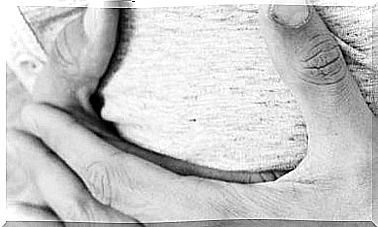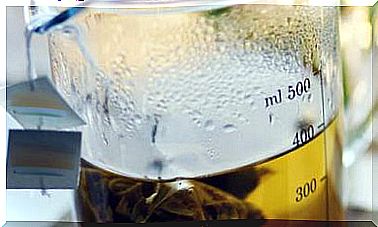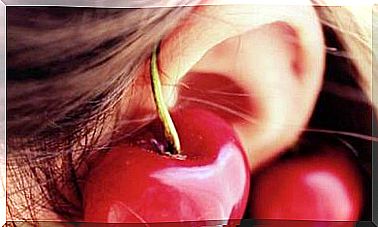32% Of Patients Combine Chemo With Natural Therapies
These are the first data on the use of complementary therapies in cancer patients in Spain. A study reveals which therapies are the most used and what patients think of them.

Many people, being diagnosed with cancer, turn to natural medicine for help to improve their prognosis, calm the anxiety that the situation generates or alleviate the side effects of the treatments. However, until now few concrete data were known about this use among cancer patients in Spain.
A study carried out at the Oncology Day Hospital at the Navarra Hospital Complex, the first of its kind carried out in the country in cancer patients, looked at a group of 316 patients undergoing chemotherapy. The experts were interested in knowing what percentage of patients combined treatment with other therapies and what use they made of them.
The results confirm that patients frequently resort to complementary therapies and that there is a high degree of satisfaction among them, but the study authors warn that some of the treatments that are chosen may interact with the medication and insist on the importance of there is always good communication with the doctor.
Combine chemo with some therapy against cancer
The study was conducted only with oncology patients undergoing intravenous chemotherapy, a group of special interest to the researchers because there may be some risk of interaction with the medication if natural preparations are taken orally. Among the participants were people with breast, colorectal and lung cancer, among others.
They were given a questionnaire to ask them about their use of alternative and complementary medicines at that time. 32.3% claimed to be using some therapy simultaneously with conventional chemotherapy treatment. Most started it after knowing the diagnosis, usually on the recommendation of a friend or relative.
This figure is similar to others indicated by previous studies in other European countries and represents a percentage slightly higher than that of the general population. However, it is much lower than in the United States, where some studies place the use of complementary medicines among cancer patients at around 90%.
The researchers also wanted to investigate the profile of patients who resort more to natural medicine. In general, there was a greater tendency among women than among men to do so. At an older age, the use of other therapies decreased.
Another interesting fact is that, in general, most patients feel that complementary therapies work for them. Almost two thirds believed that it was helping them in something, whether it was by providing them with physical and mental strength (29%), helping to alleviate the side effects of treatment (24.1%), strengthening the immune system (16.9%) or helping them to fight cancer (2.4%).
What therapies and remedies are most used in practice
The issue that the researchers draw the most attention is that 90% of the patients who resorted to complementary medicine took some remedy orally.
It was especially phytotherapy, but natural preparations such as those of Chinese medicine or any other system, minerals, vitamins and, to a lesser extent, homeopathic remedies were also frequent.
In turn , 36.2% opted for some psychophysical discipline, body treatment or energy therapy. Yoga, reiki, the application of electromagnetic fields, salt water baths, acupuncture, hyperthermia and relaxation were the most mentioned.
The study did not take into account special diets or therapeutic juices, on which many patients often base their therapeutic reinforcement strategy against cancer. Neither are the hyperprotein shakes, but in this case because they are already part of the usual medical care.
Turmeric, a classic
Plants therefore seem to be the main support that cancer patients turn to to complement their treatment. In this case the researchers counted the use of more than fifty different ones. Turmeric, known for its anti-inflammatory and antioxidant properties, was the most widely used.
Other frequently used medicinal plants were cat’s claw, licorice, thyme, milk thistle, lemon balm, and echinacea. Teas were not taken into account due to the difficulty of identifying whether they were used with therapeutic intent.
As for other types of preparations, the options were also very varied, although among the most consumed were therapeutic mushrooms from traditional Chinese medicine, probiotic strains of lactobacilli, royal jelly, propolis, algae such as spirulina, yeast, radish, black garlic and ginger.
Finally, among nutritional supplements, zinc was the most used mineral, followed by magnesium.
The risk of interaction
This aspect worries researchers. The remedies that are taken orally can in some cases interact with specific medications and it is advisable to inform the doctor or go to an integrative medicine specialist for advice.
However, word of mouth from family and friends seems to be the most common source of information when resorting to complementary therapies. The consultation with the doctor, however, is rare according to researchers.
Many people feel that they can do more for their health than rely on conventional treatment. Others find that taking care of their physical and mental well-being helps them to better cope with the disease. And in many cases, complementary therapies are helpful in reducing the side effects of the medication. The degree of satisfaction, as we have seen before, is high.
That is why it is so important that patients consult with the doctor as it is that doctors are aware of this reality. The authors of the study point, in this sense, to the need for professionals not to neglect the analysis of potential interactions between conventional and complementary treatment, in order to be able to inform the patient well.
Among the plants and natural products that the researchers cite as substances in which some interaction with chemotherapy has been identified are, for example, garlic, ginseng, echinacea and soy. In preclinical studies they have been found to be inhibitors of CYP450, which is why they can reduce the elimination of certain drugs and increase their toxicity. Others are licorice, reishi, radish, ginger, and vitamin C.
In this sense, both patients and health professionals can consult the online database of the prestigious Memorial Sloan Kettering Cancer Center in New York on the properties, efficacy and potential interactions between plants and cancer drugs.








